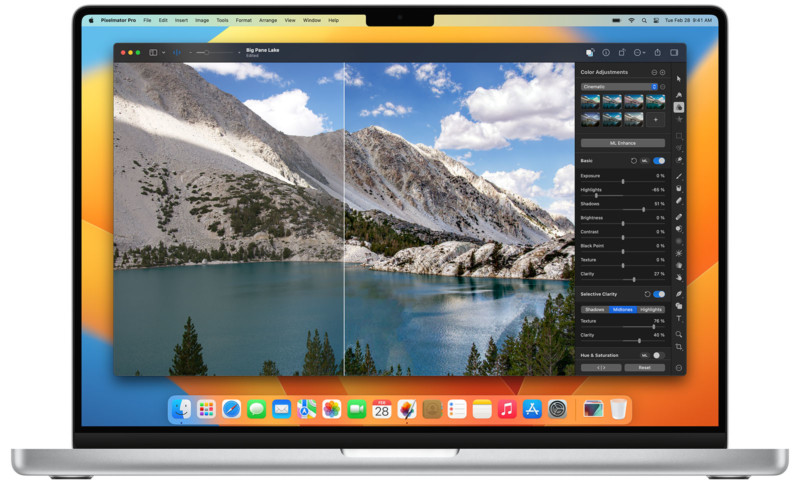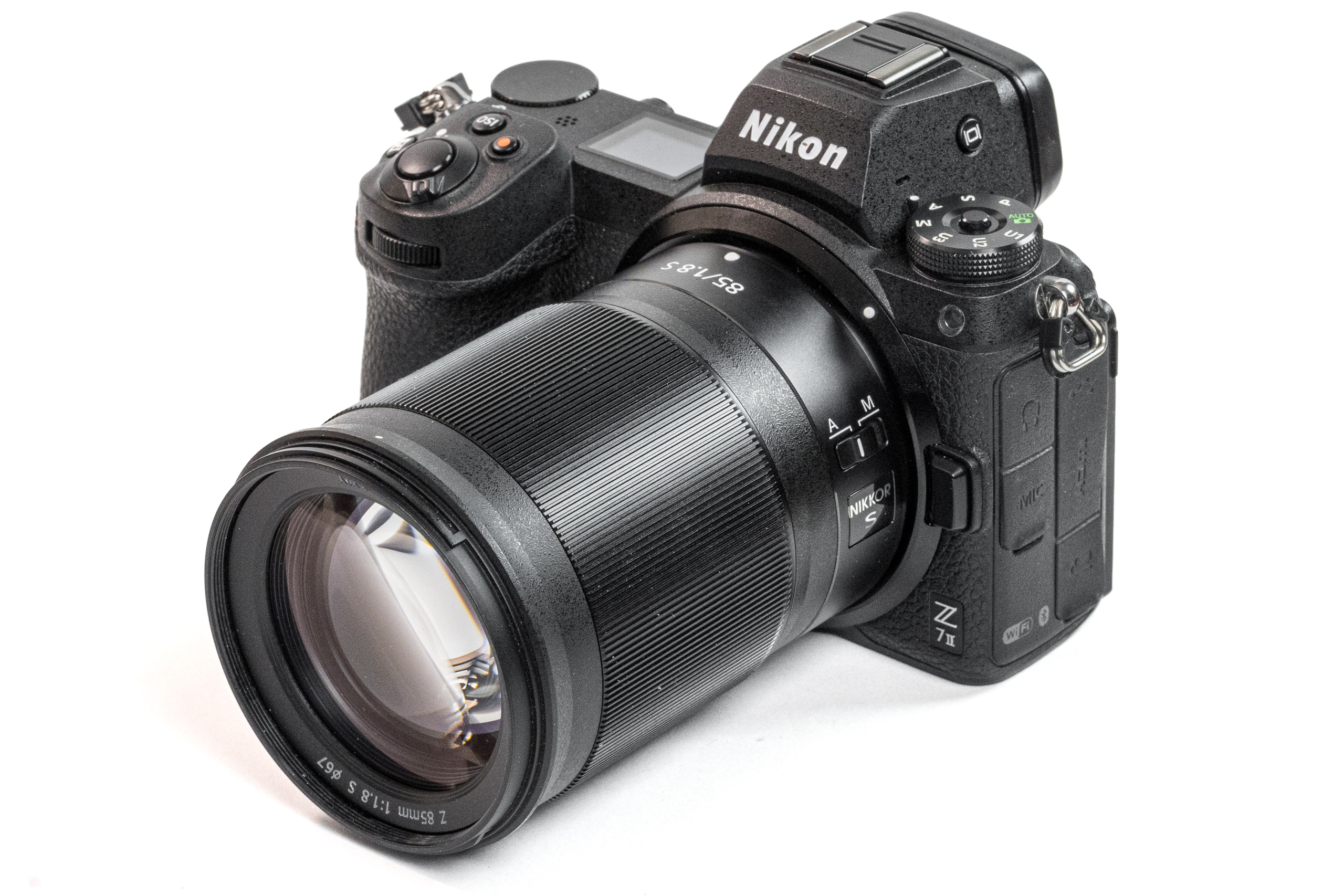![]()
Apple is getting back into imaging software as the tech giant is acquiring photo editing app developer Pixelmator. This is the latest in a series of steps demonstrating Apple’s renewed commitment to imaging at large, and it’s a big deal.
Assuming that Apple’s purchase of Pixelmator, which includes the company’s numerous editing apps including Pixelmator Pro and Photomator, passes the requisite regulatory checks, Apple will own very powerful photo editing software. While the company’s Photos app offers some editing tools, including a new AI-powered Clean Up feature that gives Adobe a run for its money and then some, it doesn’t even begin to scratch the surface of what Pixelmator Pro can do.
Pixelmator Pro 3.6 includes powerful AI-powered photo masking, RAW image editing support, AI background and subject detection tools, in-depth color editing tools, automatic photo enhancements, and much more. It is like a mix of Lightroom and Photoshop in a single app, with tools and workspaces for photographers, illustrators, designers, and digital painters.
 Credit: Pixelmator
Credit: PixelmatorMuch like Apple has done with its camera and imaging technology over the past few years, Pixelmator Pro leans heavily into machine learning to provide photographers with compelling tools. In many ways, Pixelmator has always given off strong “Apple” vibes with its branding and the look and feel of its apps, so it feels like a great match.
Pixelmator says as much itself: “We’ve been inspired by Apple since day one, crafting our products with the same razor-sharp focus on design, ease of use, and performance.”
While Pixelmator says that there “will be no material changes to the Pixelmator Pro, Pixelmator for iOS, and Photomator apps at the time,” it’s not hard to imagine what could happen with time.
 Credit: Pixelmator
Credit: PixelmatorApple routinely acquires companies and, typically, these acquisitions result in preexisting software and features being rolled into new or existing Apple products and software features, and not always to perfect effect. Apple’s Dark Sky acquisition comes to mind as a potential downside to the acquisition. That’s the worst-case scenario and a fear some Pixelmator users have already expressed.
However, the other side of the coin is that Apple and Pixelmator could create a much more competitive and appealing software landscape for photographers, and Apple could, in the best-case scenario, offer an incredible suite of applications for creative professionals across Mac, iPhone, and iPad, the lattermost of which Adobe has frustratingly underserved.
Pixelmator Pro could also just get the Logic Pro treatment. Apple acquired the app’s developer, Emagic, in 2002 and changed the app’s name from Logic to Logic Pro. The software continues to exist to this day.
When Apple stopped working on its Lightroom competitor, Aperture, in 2014, many photographers, myself included, were upset. I had to switch to Adobe Lightroom and while the software is excellent, I’ve always missed Aperture. Apple tried to somewhat replace what Aperture was with Photos, but Photos was — and is — a lackluster substitute that scarcely offers any of the tools enthusiasts and professional photographers require.
 An archival capture of Apple’s Aperture website in 2014
An archival capture of Apple’s Aperture website in 2014There is always the chance that Apple cherry-picks features from Pixelmator’s library and integrates them with Photos, which would be pretty disappointing, all else equal. Instead, imagine another scenario, which, at this moment, doesn’t feel farfetched at all: Apple and Pixelmator combine to bring Aperture back from the dead, and Apple has a full suite of apps for photographers and videographers.
Apple has already made sweeping improvements with Final Cut Pro, which is now on macOS and iPadOS and includes a dedicated multi-camera app. If Pixelmator Pro becomes an Aperture 2.0, it would be a full-fledged image editor with digital asset management tools.
 An archival capture of Apple’s Aperture website in 2014
An archival capture of Apple’s Aperture website in 2014There is a lot of work to be done to make Pixelmator Pro a legitimate Lightroom competitor but the software is already a Photoshop competitor thanks to its in-depth masking and layer support, something Lightroom can’t quite match. Arguably, Apple could continue to rely on Photos for asset management, although it requires some spiffing up to be well-suited to a professional workflow.
Add in that Apple also has Logic Pro, a powerful and popular digital audio workstation app on macOS and iPad, and the company is not merely inching closer to becoming a substantial creative software company; it is sprinting toward the goal.
Like Adobe, Apple has a broader ecosystem. Apple has a massive cloud storage network that supports asset storage and sharing across platforms. Apple has a long history of working with creative professionals.
 Credit: Pixelmator
Credit: PixelmatorHowever, unlike Adobe, Apple is a hardware company with complete control over its platform ecosystem. For the same reason that Apple could never quite touch Adobe in terms of widespread adoption, Apple can develop software and hardware in tandem.
A lot of the reasons why it made sense for Apple to shutter Aperture a decade ago suddenly seem less compelling with the Pixelmator acquisition. It’s hard and expensive work to develop and update software across multiple platforms, but Pixelmator has been doing it for years. Aperture and Lightroom filled the same niche and it was hard to keep up with Adobe, but Pixelmator Pro, in particular, is more of a hybrid Lightroom/Photoshop app which is something Adobe seemingly has little interest in ever tackling. Apple was also moving away from professional software development, so ditching Aperture was an obvious choice. However, as shown through Final Cut Pro’s resurgence and expansion, Apple is fully recommitted to professional creative software again, at least in video and audio. Now, it’s photography’s time to shine.
 Credit: Pixelmator
Credit: PixelmatorIt’s impossible to know precisely what Apple plans to do with Pixelmator. It could conceivably do nothing, although that feels unlikely. Or, perhaps Apple could do what is so desperately needed in the current software landscape and give the monolithic Adobe stiff competition across platforms the majority of creative professionals already use — Macs and iPads. This latter option is the most exciting, and it’s why Apple acquiring Pixelmator is a big deal.
Image credits: Featured image created using an asset licensed via Depositphotos.








 English (US) ·
English (US) ·